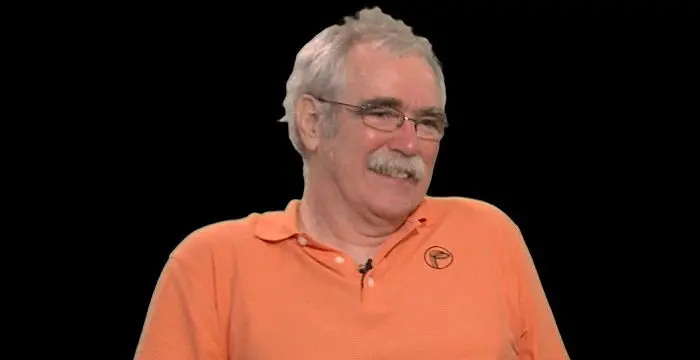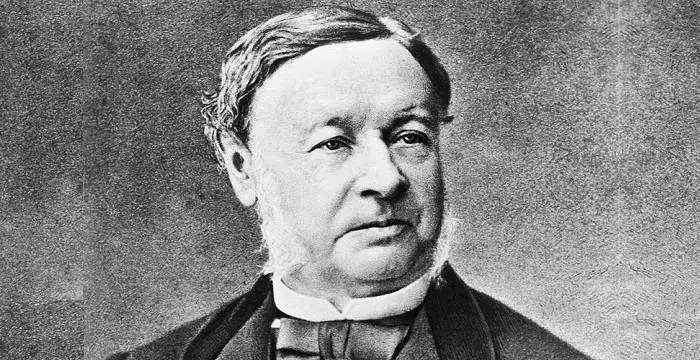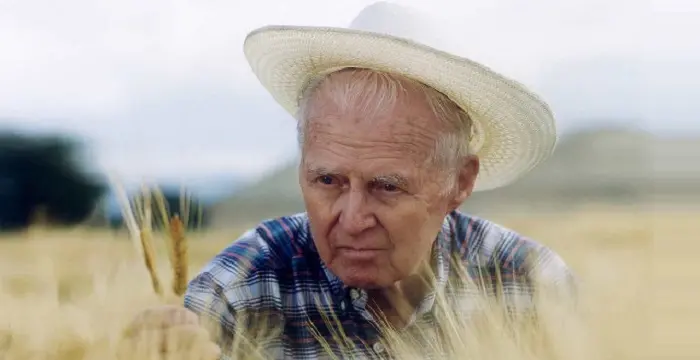
Eric F. Wieschaus - Development Biologist, Family and Life
Eric F. Wieschaus's Personal Details
Eric Francis Wieschaus is an American development biologist who was one of the joint winners of the 1995 Nobel Prize in Physiology or Medicine
| Information | Detail |
|---|---|
| Birthday | June 8, 1947 |
| Nationality | American |
| Famous | Scientists, Biologists, Development Biologist |
| Spouses | Gertrud Schüpbach |
| Known as | Eric Francis Wieschaus |
| Childrens | Eleanor, Ingrid, Laura |
| Birth Place | South Bend, Indiana |
| Gender | Male |
| Sun Sign | Gemini |
| Born in | South Bend, Indiana |
| Famous as | Development Biologist |
Eric F. Wieschaus's photo
Who is Eric F. Wieschaus?
Eric Francis Wieschaus is an American development biologist who was one of the joint winners of the 1995 Nobel Prize in Physiology or Medicine. Today, he is best known for his work on embryogenesis in the Drosophila, commonly known as fruit fly. Although he earned his doctoral degree from the University of Yale the later part of the work was done at the University of Basel, Switzerland. It was here in Basel that he first met Christiane (Janni) Nüsslein-Volhard and the two scientists quickly struck up a close friendship. Later both of them got employment at European Molecular Biology Laboratory (EMBL), Heidelberg, Germany. It was at EMBL that they set out on an ambitious project and finally identified 139 genes, which were essential for transforming a newly fertilized Drosophila egg into an embryo. The work earned them the Nobel Prize in Physiology or Medicine almost one and half decades later. By that time, Wieschaus had returned to the U.S.A. and joined the University of Princeton as Assistant Professor. He climbed the ladder quickly to become a full professor within six years. Professor Wieschaus is very active still now and spends a lot of time at his laboratory working with his student on embryogenesis.
// Famous Biologists
Juliane Koepcke
Juliane Koepcke is a German-Peruvian biologist, who was the lone survivor among the 92 passengers and crew of the ill-fated LANSA Flight 508 that crashed in the Peruvian rainforest on 24 December 1971. Know more about her life in this biography.
Theodor Schwann
Theodor Schwann was a German physiologist who discovered the Schwann cells in the peripheral nervous system. This biography of Theodor Schwann provides detailed information about his childhood, life, achievements, works & timeline.
Norman Borlaug
Norman Borlaug was an American biologist known as the “Father of the Green Revolution”. This biography of Norman Borlaug provides detailed information about his childhood, life, achievements, works & timeline.
Childhood & Early Years
Erik Francis Wieschaus was born on June 8, 1947, in South Bend, Indiana. When he was six years old, his family moved to Birmingham, Alabama, which still retained its small town characteristics. Here, he spent a lot of time exploring the woods near his home with his siblings, collecting frogs, crayfish and turtles.
At the age of fourteen, Erik was admitted to John Carroll Catholic High School. Although he was good in science subjects, becoming a scientist was never his goal. Instead he wanted to become an artist and spent a lot of time painting. He was also fond of reading books and playing the piano.
His interest in science began to develop when he attended a program funded by the National Science Foundation at Lawrence, Kansas. It was meant to encourage high school kids to become scientists. Here he dissected different kinds of animals, starting from fish to fetal pigs.
In the following summer, he had the good fortune of attending the neurobiology laboratory of Nancy and Dennis Dahl. This time he got the opportunity to experiment with a large tortoise, stripping of its outer sheathe, removing its vagus nerve and recording the electrical depolarization when they were stimulated.
In 1965, Erik graduated from school and entered University of Notre Dame, near South Bend. By this time he had decided to major in biology. As he needed money, he found a job in the Drosophila laboratory of Professor Harvey Bender, where his task was to prepare fly food.
At the same time, he began taking embryology courses from Kenyon Tweedel, which he found immensely interesting. He wanted to know what made the cells in a developing embryo different from each other or why cells in a specific region behaved the way they did.
In 1969, he earned his B.S. degree from the University of Notre Dame and then entered the University of Yale for his graduation work. Here he started working under Donald Poulson on embryology of Drosophila.
Later in the second year, he moved to Walter Gehring's laboratory in the University of Yale to learn ‘in vivo’ techniques for culturing embryos. When in 1972, Gehring joined University of Basel, Switzerland Erick moved with him and continued his doctoral work from there.
Finally in 1974, he received his PhD from the University of Yale. His thesis project was on the origin of imaginal disc cells in the blastoderm.
Career
In 1975, Eric Francis Wieschaus joined Zoologisches Institut der Universität Zürich, Switzerland as a postdoctoral Fellow under Dr Rolf Nöthiger. Here he remained till 1978 and focused mainly on the development of sexually dimorphic structures.
Meanwhile in 1976, he also worked in the laboratory of Mme Gans at Laboratoire de Genetique Moleculaire at Gif-sur-Yvette, France, on a short-term fellowship. The following year, for a brief period, he was also a visiting researcher at Laboratory of Peter Bryant, Center of Pathobiology at the University of California.
In 1978, Wieschaus was appointed a Group Leader at European Molecular Biology Laboratory (EMBL), Heidelberg, Germany. It was his first independent job. Moreover, it gave him the opportunity to pursue his work on embryology freely. There was no teaching obligation and grants were easy to get.
Here he shared the laboratory with Christiane (Janni) Nüsslein-Volhard, whom he had met while working at Basel and with whom he had developed a close friendship. Although both were Group Leaders and had their individual projects they spent a lot of time together, working on the joint mutagenesis experiment.
In 1980, working with around 40000 families of Drosophila, they succeeded in identifying 139 genes that were essential for transforming a Drosophila egg into an embryo. Moreover, they also classified these genes. Almost fifteen years later, they received the Nobel Prize for this work.
In 1981, Wieschaus returned to the U.S.A and joined the University of Princeton as Assistant Professor of Biology, remaining with the institute for around two decades. Later, he was promoted to the post of an Associate Professor in 1983 and was made a full Professor in 1987.
Later, he became a Squibb Professor of Molecular Biology at Princeton University and an adjunct professor of biochemistry at the University of Medicine and Dentistry of New Jersey–Robert Wood Johnson Medical School.
In Princeton, he continued his work on large scale mutagenesis screens for maternal effect mutants, segmentation genes and also the genes that affect the segmental identity. More importantly, working with his students at Princeton, he also discovered other genes that control cell fate in Drosophila.
Later his work focused on defining the relationship between cell fate genes and the step-by-step changes in cell shape. Since the genes discovered by him are present in higher animals, including humans, one day his work may suggest tactic that would offset developmental abnormalities in humans.
Major Works
Eric Francis Wieschaus is best remembered for his work on identification of 139 genes essential for transforming a newly fertilized Drosophila egg into an embryo. It was a huge task and no other researchers had tried to do that before.
In 1978, he and Christiane Nüsslein-Volhard set upon a trial and error method, with the aim of identifying which of Drosophila’s 20,000 genes were absolutely essential for its early development. First they randomly created mutations in the Drosophilae that ‘knocked out’ the function of individual genes.
Subsequently they bred 40,000 drosophila families that have defective genes. On examining them they finally found 5000 genes that were important for the embryonic developments, among which 139 genes proved to be essential. Drosophilae born without these 139 genes lacked in vital body parts like muscles, eyes, heads etc. In 1980, they published the result in the scientific journal ‘Nature’.
Awards & Achievements
In 1995, Eric Francis Wieschaus and Christiane Nüsslein-Volhard were awarded the Nobel Prize in Physiology or Medicine "for their discoveries concerning the genetic control of early embryonic development". They shared the prize with Edward B. Lewis of California Institute of Technology, who independently worked on the same topic.
Personal Life & Legacy
While Wieschaus was a postdoctoral fellow at Zurich he met his future wife, Gertrud Schüpbach; (published name Trudi Schüpbach), a Swiss-American molecular biologist. They got married in 1983 at Princeton. The couple has three daughters; Ingrid, Eleanor and Laura.
Trudi Schüpbach is now a Professor of Molecular Biology at Princeton University and works mainly on molecular and genetic mechanisms in Drosophila oogenesis. On occasions, she has also collaborated with her husband.
Wieschaus has always been pacifist. In his years at the University of Notre Dame, he actively agitated against the war in Vietnam. He not only collected petitions, but also joined in protest demonstrations. He even applied for conscientious objector status to avoid going to Vietnam
Trivia
To support himself at the University of Notre Dame, Wieschaus took up a job, which involved preparing food for the drosophilae. By the time he joined Yale University he was fed up of the fruit fly and did not want to come across another fly in his life. Yet, when Donald Poulson, a Drosophila geneticist, set up a place for him in his laboratory at the University of Yale, Wieschaus did not have courage to tell him so. Instead he started working on embryology of Drosophila, and the rest is history.
// Famous Scientists
Juliane Koepcke
Juliane Koepcke is a German-Peruvian biologist, who was the lone survivor among the 92 passengers and crew of the ill-fated LANSA Flight 508 that crashed in the Peruvian rainforest on 24 December 1971. Know more about her life in this biography.
Henry Cavendish
Henry Cavendish was a theoretical chemist and physicist, renowned for discovery of hydrogen and calculation of the mass of earth. To know more about his childhood, profile, timeline and career read on
Konstantin Tsiolkovsky
Konstantin Tsiolkovsky was a Russian rocket scientist and a pioneer of astronautics. This biography provides detailed information about his childhood, family, personal life, career, achievements, etc.
Eric F. Wieschaus's awards
| Year | Name | Award |
|---|---|---|
Other | ||
| 0 | Genetics Society of America Medal (1995) | |
| 0 | Nobel Prize in Physiology or Medicine (1995) | |
Eric F. Wieschaus biography timelines
- // 8th Jun 1947Erik Francis Wieschaus was born on June 8, 1947, in South Bend, Indiana. When he was six years old, his family moved to Birmingham, Alabama, which still retained its small town characteristics. Here, he spent a lot of time exploring the woods near his home with his siblings, collecting frogs, crayfish and turtles.
- // 1965In 1965, Erik graduated from school and entered University of Notre Dame, near South Bend. By this time he had decided to major in biology. As he needed money, he found a job in the Drosophila laboratory of Professor Harvey Bender, where his task was to prepare fly food.
- // 1969In 1969, he earned his B.S. degree from the University of Notre Dame and then entered the University of Yale for his graduation work. Here he started working under Donald Poulson on embryology of Drosophila.
- // 1972Later in the second year, he moved to Walter Gehring's laboratory in the University of Yale to learn ‘in vivo’ techniques for culturing embryos. When in 1972, Gehring joined University of Basel, Switzerland Erick moved with him and continued his doctoral work from there.
- // 1974Finally in 1974, he received his PhD from the University of Yale. His thesis project was on the origin of imaginal disc cells in the blastoderm.
- // 1975 To 1978In 1975, Eric Francis Wieschaus joined Zoologisches Institut der Universität Zürich, Switzerland as a postdoctoral Fellow under Dr Rolf Nöthiger. Here he remained till 1978 and focused mainly on the development of sexually dimorphic structures.
- // 1976Meanwhile in 1976, he also worked in the laboratory of Mme Gans at Laboratoire de Genetique Moleculaire at Gif-sur-Yvette, France, on a short-term fellowship. The following year, for a brief period, he was also a visiting researcher at Laboratory of Peter Bryant, Center of Pathobiology at the University of California.
- // 1978In 1978, Wieschaus was appointed a Group Leader at European Molecular Biology Laboratory (EMBL), Heidelberg, Germany. It was his first independent job. Moreover, it gave him the opportunity to pursue his work on embryology freely. There was no teaching obligation and grants were easy to get.
- // 1978In 1978, he and Christiane Nüsslein-Volhard set upon a trial and error method, with the aim of identifying which of Drosophila’s 20,000 genes were absolutely essential for its early development. First they randomly created mutations in the Drosophilae that ‘knocked out’ the function of individual genes.
- // 1980In 1980, working with around 40000 families of Drosophila, they succeeded in identifying 139 genes that were essential for transforming a Drosophila egg into an embryo. Moreover, they also classified these genes. Almost fifteen years later, they received the Nobel Prize for this work.
- // 1980Subsequently they bred 40,000 drosophila families that have defective genes. On examining them they finally found 5000 genes that were important for the embryonic developments, among which 139 genes proved to be essential. Drosophilae born without these 139 genes lacked in vital body parts like muscles, eyes, heads etc. In 1980, they published the result in the scientific journal ‘Nature’.
- // 1981 To 1987In 1981, Wieschaus returned to the U.S.A and joined the University of Princeton as Assistant Professor of Biology, remaining with the institute for around two decades. Later, he was promoted to the post of an Associate Professor in 1983 and was made a full Professor in 1987.
- // 1983While Wieschaus was a postdoctoral fellow at Zurich he met his future wife, Gertrud Schüpbach; (published name Trudi Schüpbach), a Swiss-American molecular biologist. They got married in 1983 at Princeton. The couple has three daughters; Ingrid, Eleanor and Laura.
- // 1995In 1995, Eric Francis Wieschaus and Christiane Nüsslein-Volhard were awarded the Nobel Prize in Physiology or Medicine "for their discoveries concerning the genetic control of early embryonic development". They shared the prize with Edward B. Lewis of California Institute of Technology, who independently worked on the same topic.
// Famous American peoples
Wentworth Miller
Wentworth Miller is an American actor and screenwriter who achieved recognition for his role in the TV series ‘Prison Break’.
Jason Simpson
Jason Simpson is the son of former NFL running back, broadcaster and actor O. J. Simpson. Check out this biography to know about his childhood, family, life, and little known facts about him.
Melissa Brim
Melissa Brim is the ex-girlfriend of former professional boxer Floyd Mayweather Jr. Check out this biography to know about her birthday, childhood, family life, achievements and fun facts about her.
Skai Jackson
Skai Jackson is an American child actress with huge fan following. Find more about her family & personal life, relationships, facts and more.
Joyce Meyer
Joyce Meyer is a Christian author and speaker. This biography provides detailed information about her childhood, life, achievements, works & timeline
Zoe LaVerne
Zoe LaVerne is an American musical.ly star. Check out this biography to know more about her family, personal life, including her age, birthday, etc.
Eric F. Wieschaus's FAQ
What is Eric F. Wieschaus birthday?
Eric F. Wieschaus was born at 1947-06-08
Where is Eric F. Wieschaus's birth place?
Eric F. Wieschaus was born in South Bend, Indiana
What is Eric F. Wieschaus nationalities?
Eric F. Wieschaus's nationalities is American
Who is Eric F. Wieschaus spouses?
Eric F. Wieschaus's spouses is Gertrud Schüpbach
Who is Eric F. Wieschaus childrens?
Eric F. Wieschaus's childrens is Eleanor, Ingrid, Laura
What is Eric F. Wieschaus's sun sign?
Eric F. Wieschaus is Gemini
How famous is Eric F. Wieschaus?
Eric F. Wieschaus is famouse as Development Biologist











